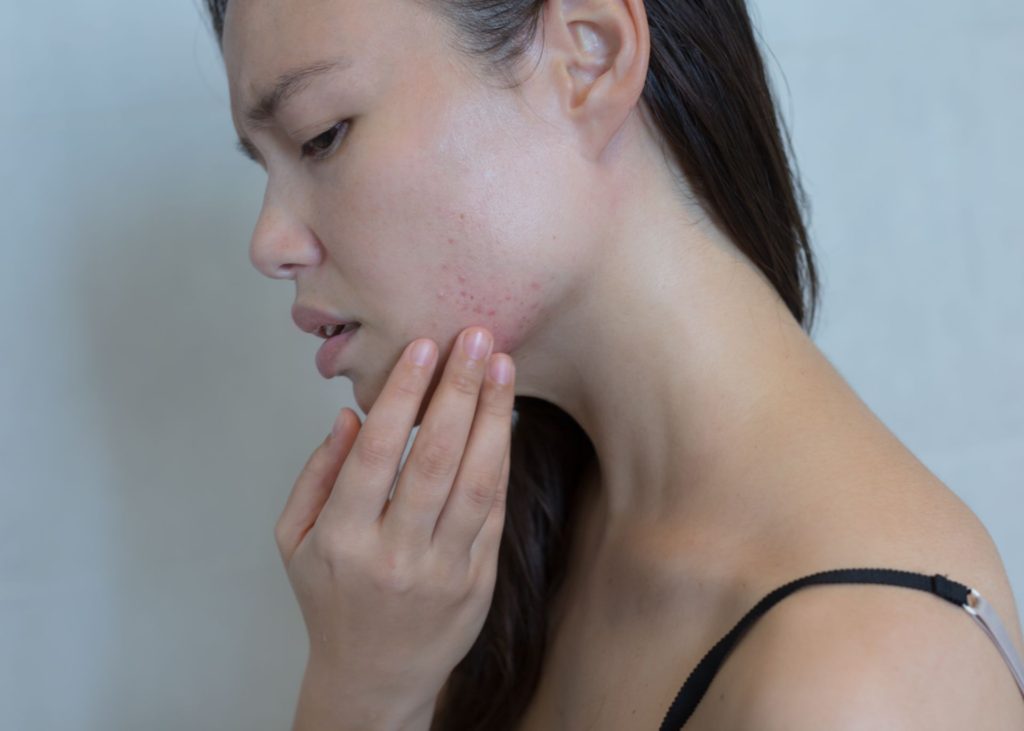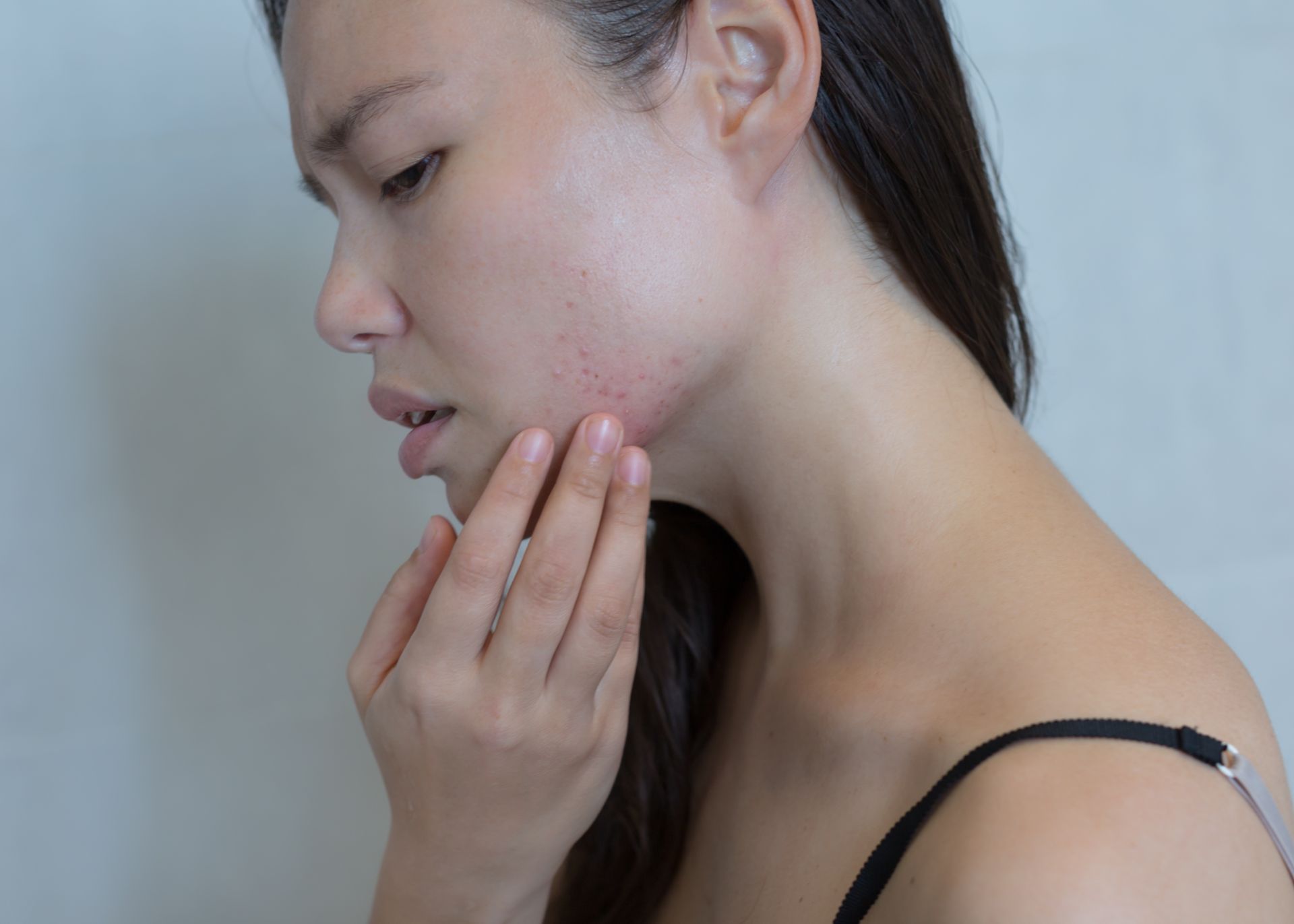Are Drugs and Alcohol Bad For Your Skin?

Of all the reasons to quit substance abuse, your smile may be the biggest.
One area where alcoholics can’t hide their drinking is on their face.
As innocuous as occasional drinking may seem, long-term alcohol and drug use could lead to many skin problems, including:
- Rosacea
- Skin lesions
- Acne Scarring
- Wrinkles
- Dark Circles

Most of these conditions may be reversed by quitting drinking or substance abuse. However, many effects, such as deep wrinkles and lesions, may require cosmetic care or long-term treatment to cure, if ever.
It’s also important to dispel the red wine myth. While small amounts of red wine may provide some good antioxidants, overall, they are not enough to counteract the harmful skin effects of dehydration that accompany binge drinking.
To better understand how drugs and alcohol are bad for your skin, let’s explore the relationship between these substances and your skin.
Does Alcohol Change Your Skin?
Alcohol changes your skin by depriving it of much-needed moisture and hydration. Alcohol is a diuretic, which drains water and salt from the body by increasing urination. So “breaking the seal” is actually your body’s way of telling you that alcohol is flushing water from your system and your skin.
Aside from the ill effects that this wrecks on your liver, alcohol will end up drying your skin, resulting in wrinkles, acne, and fine lines. In addition, alcohol may cause your skin to look flush, either due to an enzyme deficiency or because of expanding blood vessels that cause rosacea and aggravate psoriasis.
While most of these changes are easily reversible by quitting alcohol, long-term use may lead to permanent wrinkles and scarring from acne.
Does Alcohol Make Your Face Break Out?
Alcohol makes your face break out because it causes inflammation in the body. There are many causes for this, which are both direct and indirect.
- Alcohol causes pores to dilate, which leads to blackheads and pimples
- When the liver can’t expel toxins naturally, they are expelled through the skin
- Alcohol suppresses the immune system, which leads to bacterial buildup
- Alcohol increases IGF-1 hormone production, which causes your skin to produce more oil
So regardless of whether you have dry, oily, or sensitive skin, alcohol will cause your face to break out. If untreated, this may lead to scarring and permanently altered skin complexion.
However, alcohol is not the only substance that changes our skin, as many common street drugs can have equally, if not greater, consequences.
Do Certain Drugs Give You Bad Skin?
Yes, many common street drugs will give you bad skin. For example, many common substances, such as meth and heroin, have their own skin conditions named after them, which we list below.
1. Methamphetamine
Meth dries the skin out far more significantly and quickly than alcohol. Common effects of long-term meth use include tooth loss (Meth mouth), scabs from skin picking, and leathery skin caused by excessive dehydration.
2. Heroin
Heroin causes the skin to feel warm and flush and deprives it of much-needed enzymes that lead to wrinkles and fine lines. In addition, heroin users commonly suffer from venous sclerosis, otherwise known as track marks.
3. Cocaine
Cocaine causes internal inflammation of major organs and the gut, reflected on the skin. For instance, cocaine users may develop acne, rashes, blackened palms, and dying skin cells.
4. Oxycodone
Oxycodone may lead to rashes and hives, in addition to scabs formed from repeated itching and picking.
5. Marijuana
Marijuana may present several harmful effects to your skin by inhibiting collagen production, impacting testosterone levels, and releasing free radicals in the body that causes inflammation.
6. Adderall
Like methamphetamine, prescription amphetamine drugs cause many of the same effects, including rashes and hives and leaving your skin sensitive to breakouts and damage.
Signs Of Drug Use on Your Face
Unfortunately, long-term drug and alcohol use will show up on your skin and permanently alter your appearance if untreated. Some signs of long-term drug use on your skin include:
- Hyperpigmentation: Changing skin color at the injection site or altered complexion from long-term usage.
- Acne and Scarring: Untreated blackheads and acne breakouts could lead to scarring, which requires dermatological treatment to restore back.
- Fine Lines and Wrinkles: Long-term skin dryness associated with alcohol and many substances will accelerate the development of fine lines and wrinkles.
- Lesions: Lesions and deep scarring may occur from picking, scratching, and track marks at injection sites.
- Oral Decay: Long-term tobacco, meth, and even alcohol use may lead to tooth decay, gum disease, or oral cancer.
How Long After I Quit Alcohol or Drug Use Will My Skin Improve?
It takes one week after quitting alcohol to notice improvements in your skin and complexion. During this period, your skin will begin to recover from inflammation and rid itself of toxins in your spores.
Between one week to one month after quitting alcohol, you will notice softer and smoother skin that’s more hydrated and has a better complexion.
Conclusion
Drug use wreaks havoc on our bodies, including nervous system disorders, digestive issues, changes in our mental well-being, and poor skin.
Perhaps the biggest sign that you’re suffering from long-term drug dependence is staring you in the mirror.
Fortunately, you will reverse many of the ill effects of drug use and alcohol on your skin by quitting substance abuse.
Drugs and alcohol are bad for your skin, and the first step to reversing their harm is seeking help. At DayBreak Treatment Solutions, we offer inpatient rehabs in Philadelphia and outpatient treatment for addicts struggling with alcohol and substance abuse. After just a few weeks of treatment, you won’t just notice improvements in your skin but your overall well-being.
If the eyes are the window to the soul, the skin is the window into our health. So quit substance abuse to fix your health today.
